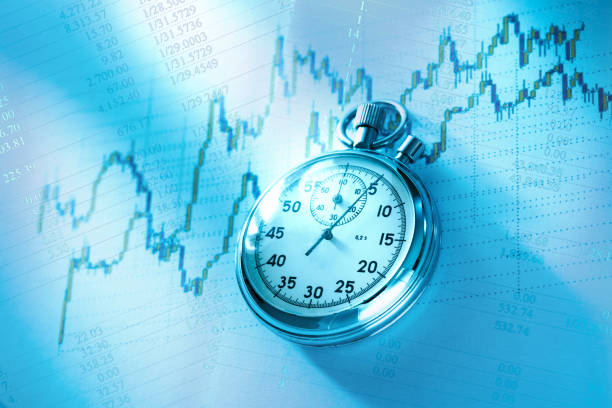The “Stock Market Dow Live” is a crucial term for investors, traders, and anyone interested in tracking the performance of the Dow Jones Industrial Average (DJIA) in real-time. One of the most significant stock market indices in the world is the DJIA, which is frequently just called the Dow. It displays the results of 30 significant U.S. listed corporations stock exchanges. This live data offers vital information about how the broader market is performing, especially for those focused on making informed investment decisions.
Understanding the Dow Jones Industrial Average
When Charles Dow founded the Dow Jones Industrial Average (DJIA) in 1896, it only had 12 companies. Over time, it expanded to 30 companies, representing major sectors such as technology, finance, healthcare, and consumer goods. The Dow is a gauge of the US economy. stock market and the economy in general. It includes companies like Apple, Microsoft, and Coca-Cola, and its performance is watched by millions worldwide.
“Stock Market Dow Live” refers to real-time updates on the Dow’s performance, offering insight into the collective performance of its 30 companies. Live updates are vital for investors, providing immediate changes in stock prices and market factors.
Also Read: Why Did the Stock Market Crash in 1929: The Perfect Storm?
How the Stock Market Dow Live Works
Real-time data feeds from stock exchanges and financial services enable live tracking of the Dow Jones Industrial Average on websites, apps, and news outlets. Updates include the Dow’s performance in terms of points, percentage change, and breakdown of individual stock performance within the index.
Live Dow tracking helps traders and investors assess market movements, understand sentiment, and make real-time decisions. Positive trend signals bullish sentiment, while declines may indicate negative sentiment or external factors.
Why the Stock Market Dow Live is Important
For investors, the “Stock Market Dow Live” feed is crucial in making quick and informed decisions. Here are several reasons why:
Market Sentiment: The Dow is often used as a barometer of the overall market sentiment. A strong performance in the Dow can indicate economic stability and growth, while declines could signal concerns about economic health or external factors affecting the market.
Decision-Making for Traders: Traders rely heavily on live updates to make quick buy and sell decisions. Day traders, in particular, need to track real-time movements in the Dow to capitalize on short-term fluctuations.
Tracking Economic Health: The Dow is made up of companies that span various sectors of the economy. Therefore, observing how it moves in real-time can provide insights into the overall health of different industries, the economy at large, and investor confidence.
Risk Management: Real-time tracking of the Dow also helps investors manage risk. For example, if the Dow starts dropping significantly due to negative news, investors may decide to adjust their portfolios to minimize losses. Conversely, they might opt to take advantage of rising stocks when the Dow shows positive growth.
Influence on Other Markets: The Dow has a profound influence on other financial markets. A significant shift in the Dow can affect commodities, bonds, and even international stock markets. Investors often watch the Dow’s performance to predict the likely movements of other indices like the S&P 500 or the Nasdaq.
Factors Affecting the Stock Market Dow Live
The “Stock Market Dow Live” movement is influenced by the following factors:
Economic Data and Reports: Economic reports such as GDP growth, inflation data, employment figures, and retail sales can greatly impact the Dow. Positive data typically boosts the Dow, while poor economic reports tend to have the opposite effect.
Corporate Earnings Reports: Since the Dow consists of major companies, their earnings reports are essential in determining its performance. Strong earnings often push the Dow higher, while disappointing results can drag it down.
Global Events: International issues like geopolitical tensions, trade wars, and even natural disasters can create volatility in the Dow. For instance, if there’s uncertainty surrounding a trade agreement with China, the Dow might drop in anticipation of economic setbacks.
Monetary Policy: Decisions made by the Federal Reserve, especially regarding interest rates, can also influence the Dow. For example, a rate hike might lead to a sell-off, while rate cuts could encourage buying.
Using the Stock Market Dow Live for Investment Strategies
Investors often use the “Stock Market Dow Live” data to adjust their portfolios and strategies. Long-term investors may focus more on the broader trends, such as the Dow’s overall direction over months or years. On the other hand, short-term traders use real-time data to make fast decisions, often utilizing technical analysis, chart patterns, and other indicators based on live Dow performance.
Conclusion
In conclusion, the “Stock Market Dow Live” is an essential tool for understanding and navigating the fluctuations of the stock market in real-time. Whether you are an investor, trader, or just a market enthusiast, keeping track of the live movements of the Dow provides invaluable insights into economic conditions, investor sentiment, and overall market trends. Keeping an eye on the Dow aids in risk management, decision-making, and adjustment to the ever-changing stock market.

